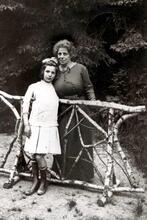Hannah Wilke
Hannah Wilke used her art to transform perceptions of the vagina, the nude female form, and her own cancer-ridden body. In 1974, she began her Starification Object Series, photographing herself semi-nude and covered with vaginal-shaped pieces of chewing gum that appear like scars, and began teaching at the School for Visual Arts. In 1987, after she was diagnosed with lymphoma, she showed a series of abstract watercolors she had been painting on her face as B.C., before consciousness of her cancer. In 1991, she began a body of work she intended to call Cured but finally titled Intra-Venus, a series of photographs, videotapes, and drawings documenting her illness.
The body is omnipresent in the work of Hannah Wilke. Her typically nude body and its self-representation became the vehicle by which Wilke exposed personal, political, and linguistic themes. Like the work of her feminist peers of the 1970s, Wilke’s art has often been oversimplified by critics, yet it continues to influence the complex art of postmodern artists today.
Family & Education
Wilke was born in New York City on March 7, 1940, as Arlene Hannah Butter to Selma and Emanuel, a lawyer. Wilke’s maternal grandparents, the Fabians, emigrated to the United States from Hungary and her paternal grandparents from Poland. She earned two degrees from Temple University in Philadelphia: a bachelor of fine arts from Tyler School of Art in 1960 and a B.S. degree in 1961. After her marriage to designer Barry Wilke ended, she returned to New York City in 1965. Here Wilke would be represented by Ronald Feldman Fine Arts and later teach at the School of Visual Arts for nearly two decades.
Wilke’s elder sister, feminist therapist Marsie Scharlatt, observes that one of her sister’s first artistic joys was the folding of triangular pastries with their mother (Intra-Venus, 18). This process is echoed in Wilke’s signature fortune cookie-like works, such as Teasle Cushion (1967), which combines the artist’s interest in human gesture and sexuality with wordplay. These folded forms are ever-present in Wilke’s oeuvre—made of terra cotta, latex, lint, chewing gum, etc.—and are consistently vaginal in shape. “My concern,” asserted Wilke, “is with the word translated into form, with creating a positive image to wipe out the prejudices, aggression, and fear associated with the negative connotations of pussy, cunt, box” (Frueh, 139). Similarly, Wilke reclaimed disposable materials, such as lint, thereby transforming the “negative” into “art.”
Photography, Video, & Performance Art
Although Wilke continued to produce both sculpture and drawings, by the early 1970s she had begun to focus on photography, video, and performance art. In S.O.S.—Starification Object Series (1974–75), Wilke presents a collection of “performalist self-portraits,” in which she both parodies and dismantles stereotypical representations of “femininity.” She disrupts the pleasure of the gaze by covering her semi-nude body with vaginal-shaped chewing gum, which appear as scars on her flesh. For Wilke, this “scarification” links beauty with vulnerability and death via such references as numbered tattoos on Holocaust victims and African cicatrization.
Nudity assumes a different role in Wilke’s Venus Pareve (1982–1984), a group of small self-portrait figures that were originally cast in chocolate. As she related the consumption of food with that of women, Wilke explored ideas concerning beauty and Jewish identity. The Hebrew dietary term pareve [neither meat nor dairy] is used to convey the concept of the universal. Thus, Wilke offered her classically nude body as a “universal” Jewish goddess of love, while examining myths of the ideal woman.
Illness & Artistic Documentation
In 1987, Wilke was diagnosed with lymphoma. She had been painting abstract watercolors of her face that were later exhibited as B.C. meaning Before Consciousness (of her cancer). In 1991, Wilke began to document the effects of her illness/treatment. With the help of her husband, writer and editor Donald Goddard, she produced Intra-Venus, a painfully profound series using photographs and mixed-media to reveal the gradual deterioration of her once-familiar body. Goddard explains that the works were originally to be part of her Cured show, but that title could not be used (Intra-Venus, 16).
Hannah Wilke died on January 28, 1993.
“Artist Hannah Wilke Talks with Ernst.” Oasis d’Neon 1, nos. 1 and 3 (1979): 1–5.
Broude, Norma, and Mary D. Garrard, eds. Power of Feminist Art (1994).
Frueh, Joanna. Hannah Wilke: A Retrospective. Edited by Elisabeth Delin Hansen, Kirsten Dybbøl, and Donald Goddard. Copenhagen: Nikolaj, Copehnagen Contemporary Art Center, 1988. Hannah Wilke: A Retrospective. Edited by Thomas H. Kochheiser (1989).
Huestis, Chris, and Marvin Jones. “Hannah Wilke’s Art, Politics, Religion and Feminism.” New Common Good (May 1985): 1+.
Jones, Amelia, Donald Goddard, Marsie Scharlett, et al. Intra-Venus (1995).
Margolin, Ruth. “An Interview with Hannah Wilke.” Forum (November/December 1989): 9–11.
Robins, Corinne. “Why We Need ‘Bad Girls,’ Rather than ‘Good’ Ones!” M/E/A/N/I/N/G 8 (November 1990): 43–48.
Ronald Feldman Fine Arts, Inc. Archives. NYC.
Rose, Barbara. “Vaginal Iconology.” New York (May 20, 1974): 59.
Siegel, Judy. “Between the Censor and the Muse? Hannah Wilke: Censoring the Muse?” Woman Artists News (Winter 1986): 4+.
Smith, Roberta. “Hannah Wilke, 52, Artist, Dies: Used Female Body as Her Subject.” NYTimes, January 29, 1993, A18.
Too Jewish? Challenging Traditional Identities. Edited by Norman L. Kleeblatt (1996).
Wacks, Debra. “Feminism/Humanism in Hannah Wilke’s S.O.S.—Starification Object Series.” Master’s thesis, Institute of Fine Arts, New York University, 1992.



